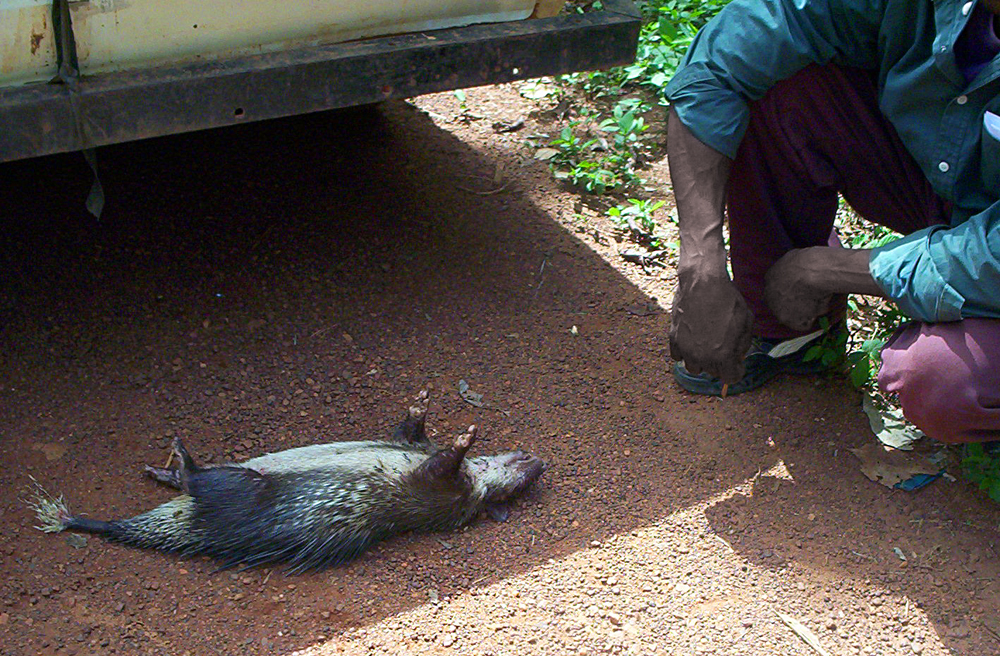- African Brush-tailed Porcupine
Taxobox
name = African Brush-tailed Porcupine
status = LC
status_system = iucn3.1
trend = unknown

image_width = 300px
image_caption = African brush-tailed porcupine sold for meat inCameroon
regnum =Animal ia
phylum =Chordata
classis =Mammal ia
ordo =Rodent ia
familia =Hystricidae
genus = "Atherurus "
species = "A. africanus"
binomial = "Atherurus africanus"
binomial_authority = Gray, 1842The African Brush-Tailed Porcupine ("Atherurus africanus") is a species of
rat -likeOld World porcupine called "brush-tailed porcupine s". The brush-tailed porcupines live in forests, usually at high elevations. They arenocturnal and during the day they sleep incave s and burrows. The brush-tailed porcupine is one of the biggestrodent s inAfrica , growing almost three feet long and weigh as much as eight pounds. It has an elongated rat-like face and body and short legs, tipped with clawed and webbed feet. Unlike most other porcupines, the brush-tailed porcupine has lighter and smaller quills. On the tail, these quills are thinner and brush-like. These can make noise when rattled. Brush-tailed porcupines live in small family groups of about eight members. Different family groups can share resources. When attacked by apredator , the porcupine raises its quills so it looks twice its size, rattles its tail quills, and stomps its feet. As with all porcupines, the brush-tailed porcupine would back into the attacker and inflict damage with its quills.The brush-tailed porcupine is mostly herbivorous. When alone eating, the porcupines can be quite nervous. During the breeding season, males and females form pair bonds to get acquainted. The African brush-tailed porcupine has a long pregnancy compared to other rodents: 110 days at the longest. The young are born well-developed or
precocial . Porcupines reach maturity at two years of age.The meat of the African Brush-tailed Porcupine is very popular and is consumed in large quantities.
References
* Database entry includes a brief justification of why this species is of least concern
*Jori, F., "et al." The biology and use of the African brush-tailed porcupine (Atherurus africanus, Gray, 1842) as a food animal. A review. "Biodiversity and Conservation" Volume 7, Number 11: 1417 - 1426 (November 1998) [http://www.springerlink.com/(qneduy453ty4z3f0wljjaei0)/app/home/contribution.asp?referrer=parent&backto=issue,4,10;journal,86,108;linkingpublicationresults,1:100125,1]
Wikimedia Foundation. 2010.
